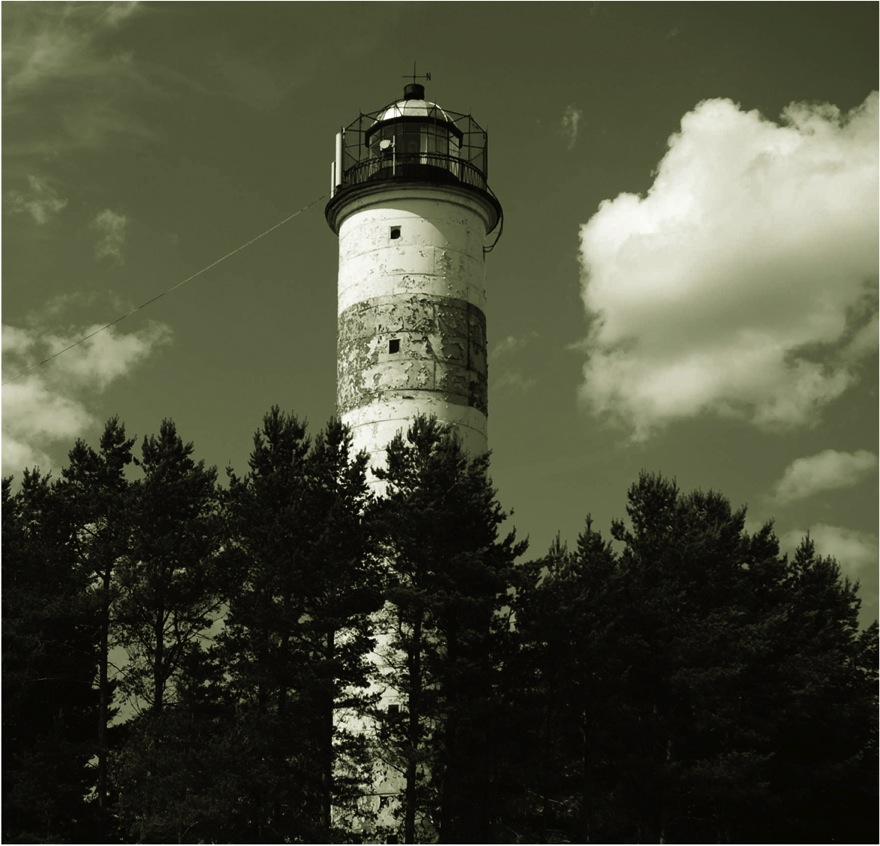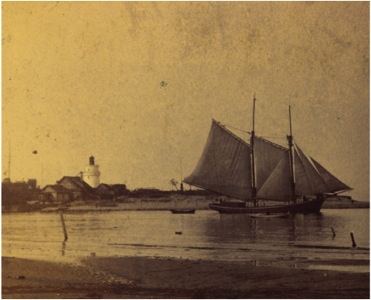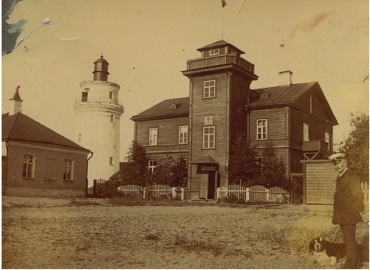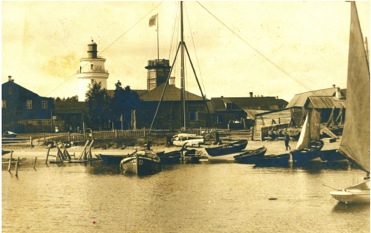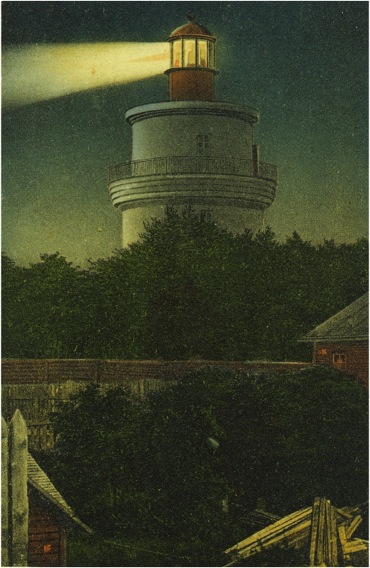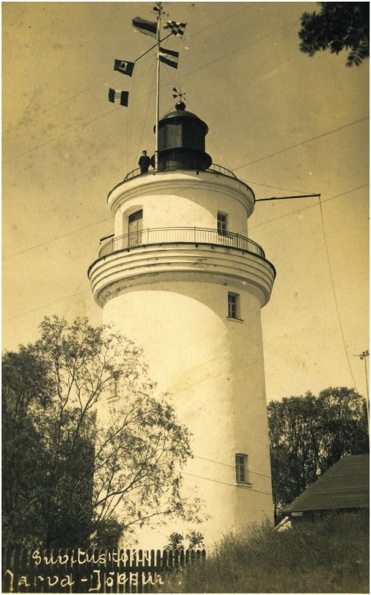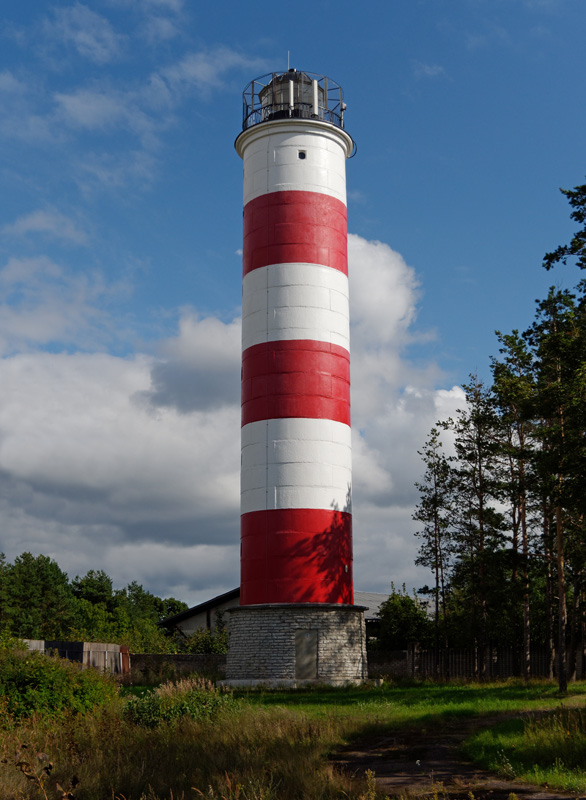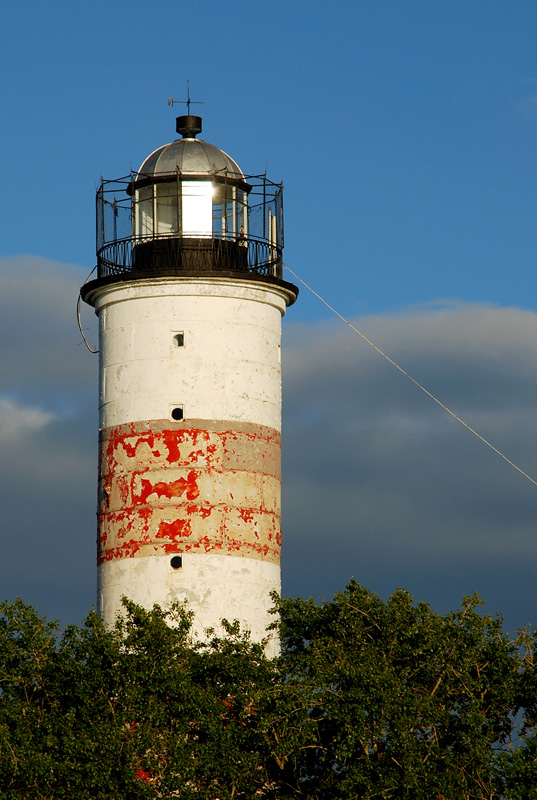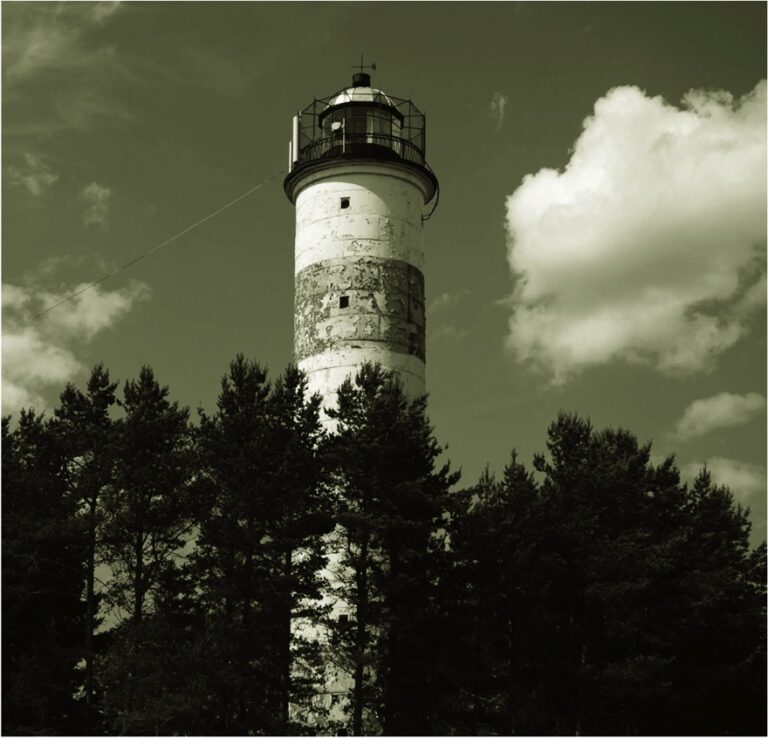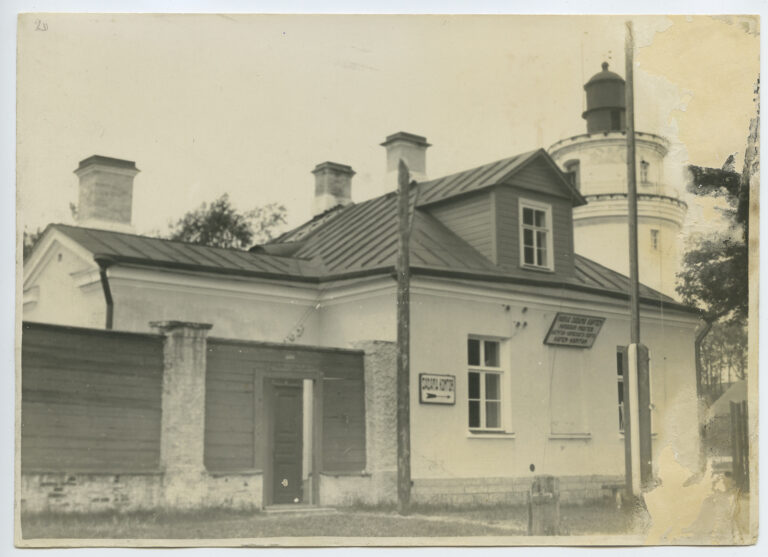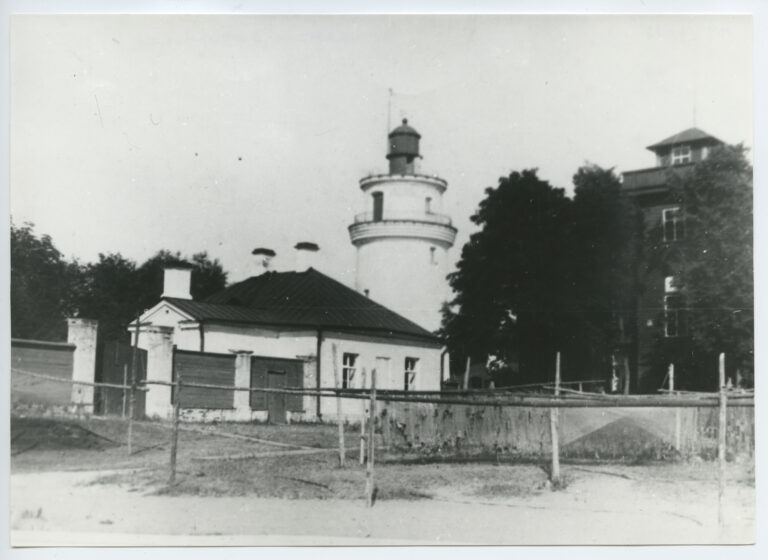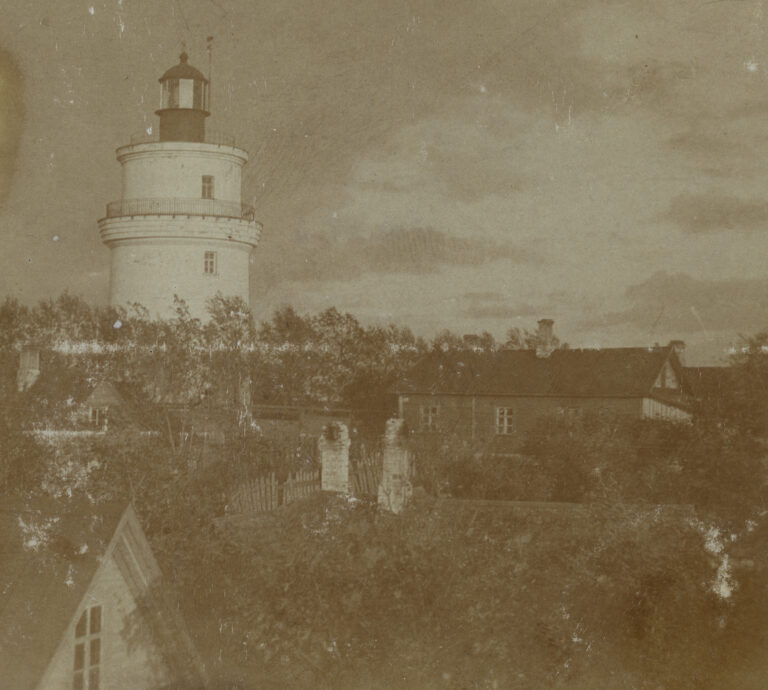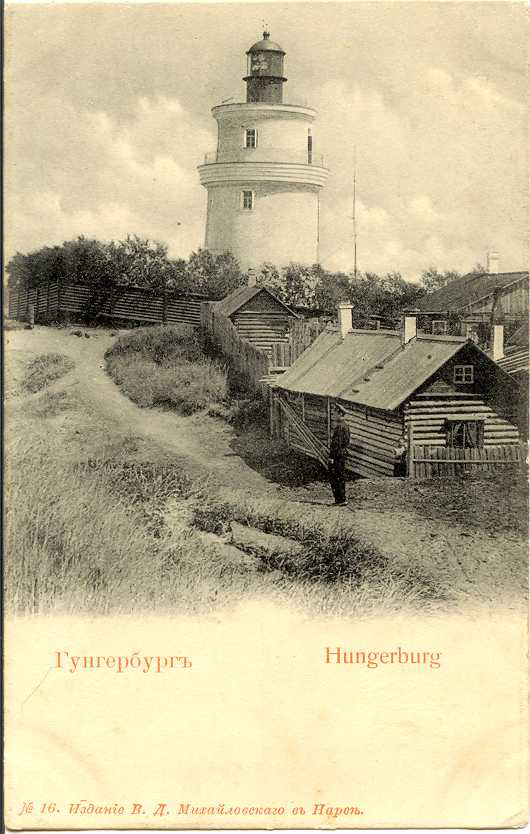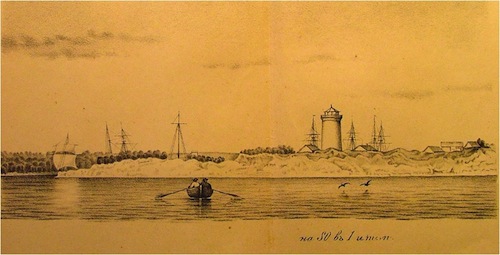
In Swedish times, the waterways to Pskov, Novgorod and Moscow ran from the city of Narva, which is important for maritime trade. As a result of active trade with Russia, the importance of Narva had increased to such an extent that in the middle of the 17th century, the Swedish authorities even considered declaring Narva the eastern capital of Sweden. There is information that there was already a signal light in Narva-Jõesuu during Swedish times.
In Tsarist Russia, even more attention was paid to maritime shipping, and in order to achieve more effective work, the position of director of the Baltic lighthouses of the Admiralty Department was created in 1803. It was assigned to Leonti Spafarjev, who was passionate about his work and during whose tenure a large number of sea marks were erected and reconstructed. Under his leadership, a 16-meter limestone lighthouse with a round ground plan was completed in 1808 on the west bank of the Narva River. The lighthouse was necessary for ships carrying wood to find the right anchorage. The ships often arrived in the dark and waited to be loaded with timber produced by boats from the shallow mouth of the river. In the 12-sided lantern room, 24 lamps with spherical mirrors and hemp oil lamps were installed, which directed the light to the sea in different directions. The fire was 22 m above sea level, with a visibility distance of 14 miles.
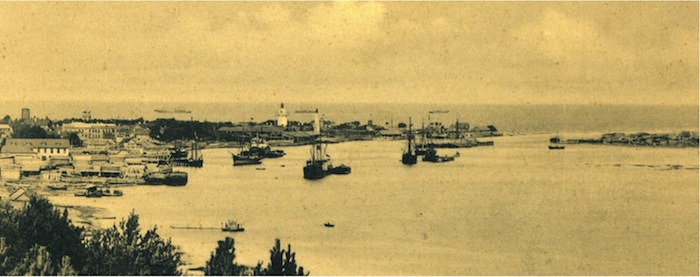
1860. From the 1990s, a pilot station, rescue station, port office, customs and border guard cordon were located near the lighthouse. Before World War I, there were three rescue station poles at the mouth of the Narva river. One was located by the lighthouse in the river port, the others by the sea on both sides of the river mouth.
1870. In 2010, the Narva-Jõesuu lighthouse started with repair work. The lighthouse was buried in the blowing sand on the seaward side and was no longer easily visible. To strengthen the tower, the solid lighthouse was tied with iron rods and raised to 24 meters. By the end of the work in 1886, a metal lantern had also been added, where 7 catoptric lights with a visibility distance of 10 miles were installed. By 1903, it was decided to modernize the lighting equipment - a III degree dioptric device with constant light was placed in the red lantern room of the white lighthouse, with a similar visibility distance as the previous one.
The service buildings of the lighthouse were damaged by the cannon fire of the English and French fleets during the Crimean War (1853–1856). The lighthouse together with the service buildings was destroyed in World War II.
A new lighthouse was started to be built on the banks of the Narva River in the second half of the 1950s, when reinforced concrete was again used in the construction of lighthouses. The red and white striped lighthouse was built from prefabricated reinforced concrete parts. The heavy 1.5 ton parts were manufactured in Tallinn and transported by car to Narva and assembled using a tower crane brought to the site. The Narva lighthouse with a cylindrical body and a balcony around the lantern was completed in 1957. Two residential buildings, a generator building, a workshop and a sauna were also built near the tower, which have been preserved to this day.
